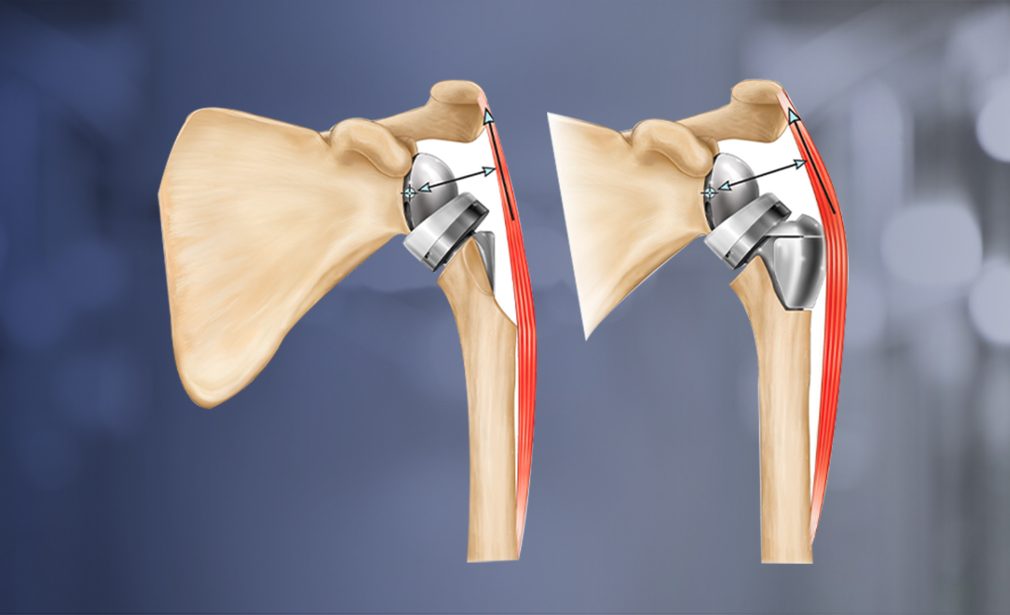Reverse Shoulder Replacement (also called Reverse Total Shoulder Arthroplasty) is a specialized surgical procedure where the normal ball-and-socket structure of the shoulder joint is reversed. The metal ball is placed on the shoulder blade (scapula), and the plastic socket is placed on the upper arm bone (humerus).
This technique is used when the rotator cuff is severely torn or non-functional, and the shoulder joint is painful or unstable. By reversing the joint anatomy, the deltoid muscle takes over the function of lifting the arm, improving movement and reducing pain. The common symptoms are:
- Persistent, often deep or aching pain that worsens with movement or at night.
- Difficulty lifting the arm overhead or reaching behind the back due to weak or torn rotator cuff muscles.
- Inability to perform basic tasks like combing hair, reaching shelves, or lifting light objects.
- A feeling of grinding, clicking, or catching inside the shoulder during movement.
- Restricted shoulder motion, often making the joint feel "locked" or frozen.
- Restricted shoulder motion, often making the joint feel "locked" or frozen.
- Mild swelling around the shoulder, especially after use or activity.
- Little or no relief from medications, injections, physical therapy, or even previous shoulder surgeries.
Frequently asked questions
It is commonly done for cuff tear arthropathy, complex fractures, failed previous shoulder surgery, or arthritis with rotator cuff damage.
It is performed when:
- The rotator cuff is torn beyond repair
- There’s severe arthritis with rotator cuff damage (cuff tear arthropathy)
- Previous shoulder surgeries have failed
- Complex fractures in older patients
In traditional (anatomic) shoulder replacement, the implant mimics natural anatomy. In reverse replacement, the ball and socket are switched to allow the deltoid muscle to move the arm—ideal when the rotator cuff doesn’t work.
– Sling use for 4–6 weeks
– Physical therapy starts early
– Most patients regain function in 3 to 6 months
– Full recovery may take up to a year
You’ll regain functional range of motion, especially for lifting the arm. Overhead motion improves, but some limitations (like rotating behind the back) may remain.
Reverse shoulder implants typically last 15–20 years, depending on use and overall health.
You can resume light activities like walking, swimming, and household tasks. Heavy lifting or contact sports are generally not recommended.


